Photography courtesy of Lowell Washburn, all rights reserved.
With its distinctive zebra-striped head, crow sized body, and maniacal call, the pileated woodpecker is in a league of its own. It is one of my favorite woodland birds. Finding an active territory is easy. The equivalent of feathered jack hammers; pileateds employ powerful chiseled beaks to whack away three and four-inch chunks of bark and wood as they search for their favorite entrée — carpenter ants. Chips fly and on a calm day, the noise can be heard for a quarter mile. By the time the task is finished, hardwood trunks often bear telltale ten-inch-deep scars measuring up to six feet in length. By the time the excavations are finished, the trunks are as completely shredded as if they had been visited by foraging bears.
But getting a close look at the birds themselves is not so easy. As elusive as a spring gobbler and as shy as an emerging morel, the pileated is a master at avoiding human contact. This is definitely one forest species that is more often heard than seen.
But I’ve recently discovered a technique that has definitely tipped the scales in my favor and is literally bringing the birds to me. The ploy came to me while bow hunting for spring turkeys. Although I wasn’t hearing any gobbling at the moment, a pair of pileateds were currently raising the roof from farther back in the timber. Although the birds remained unseen, I suddenly had an idea. Why couldn’t a person lure the giant woodpeckers into view with decoy and calls in a similar fashion to what I was currently using to attract wild turkeys?
Seemed logical enough. But of course, you can’t just run to the nearest sporting goods store and grab a bag of pileated woodpecker decoys. I’d have to improvise. A dusty plastic crow decoy hanging in the rafters of my garage seemed a likely candidate for a ‘pileated makeover’. Grabbing a small paint brush and applying a couple of white stripes here and a splash of red there, the crow quickly began to resemble a woodpecker – at least to me. To imitate the bird’s distinctive call, natural sound was recorded to a CD which I planned to play through my portable electronic snow goose caller.
Returning to the woodland with my new equipment and a portable ground blind, I couldn’t wait to see what would happen. With decoy and single remote speaker in place, I crawled into the blind and started the caller. The forest echoed with the distinctive recorded sound of a pileated woodpecker on territory. Then, to my total amazement, a real pileated woodpecker immediately responded with a resounding challenge. Within seconds the huge black bird had arrived on the scene. Landing nearby, the pileated sized up the intruder with what appeared to be a blend of intense curiosity and territorial agitation. The bird flew from tree to tree until it had made a complete circle around the decoy. Although obviously interested, the woodpecker never ventured closer than around 20 feet from the decoy. Although the recorded calls were real enough, I’m not sure the pileated was fully convinced that my converted crow decoy was the real deal.
After hanging around for five minutes or so, the pileated retreated back into the woodland. Although the bird continued to answer my recorded calls, it never returned to the blind. Although I had hoped to get a wider variety of photos, I considered the outing to be a definite success. For now, it’s back to the drawing board where I’m hoping to carve a wooden pileated effigy that will prove more convincing than a made over, plastic crow.

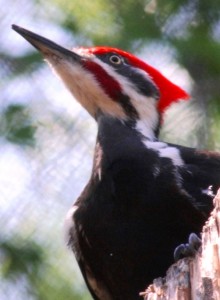

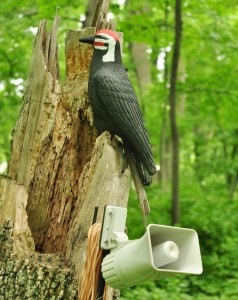
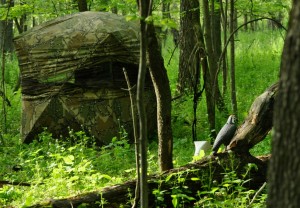
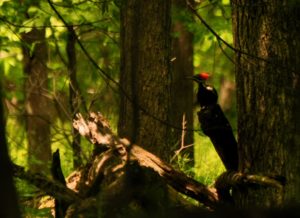
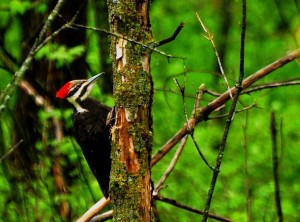
 Tom Cope
Tom Cope Sue Wilkinson
Sue Wilkinson Susan Judkins Josten
Susan Judkins Josten Rudi Roeslein
Rudi Roeslein Elyssa McFarland
Elyssa McFarland Mark Langgin
Mark Langgin Adam Janke
Adam Janke Joe Henry
Joe Henry Kristin Ashenbrenner
Kristin Ashenbrenner Joe Wilkinson
Joe Wilkinson Dr. Tammy Mildenstein
Dr. Tammy Mildenstein Sean McMahon
Sean McMahon